The definitive guide to choosing your first wetsuit
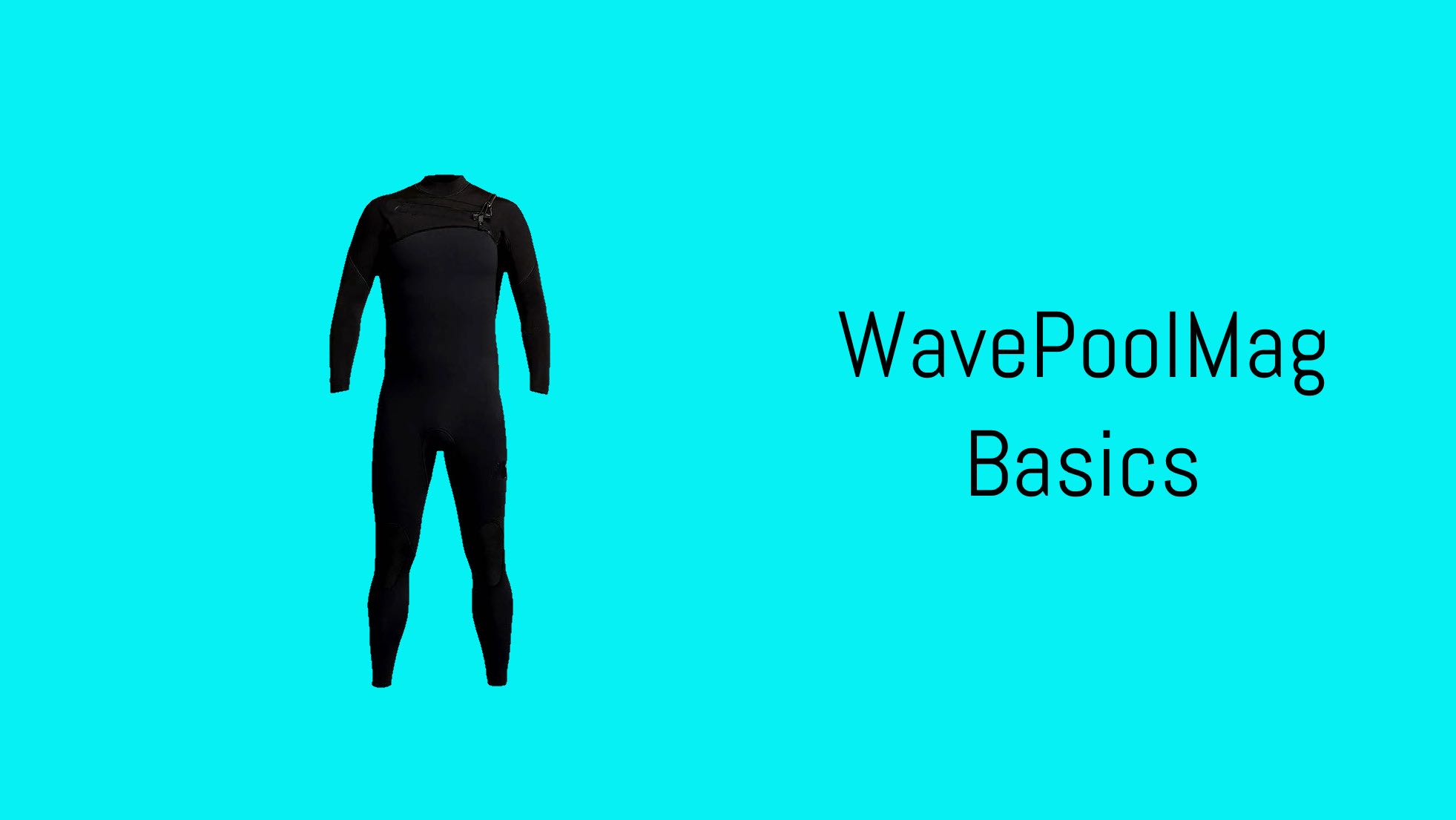
WavePoolMag Basics is an ongoing series providing essential surf gear information for those surfers new to the pool.
Whether you’re learning in a wave pool or in the ocean or (hopefully) both, if you are a novice surfer who is committing to the sport, you’ve realized that it’s time to invest in a wetsuit. Those ragged rental suits just aren’t cutting it anymore.
Making sure your body is adequately warm is crucial for a surf session. Being too cold will not only cut your sessions short, but it will make surfing cause more suffering than pleasure.
But there are so many options: Styles, thickness, zipper placement, and price range. How do you choose? Let’s dive into it step by step to make sure you are keeping warm in the ocean and/or wave pool.
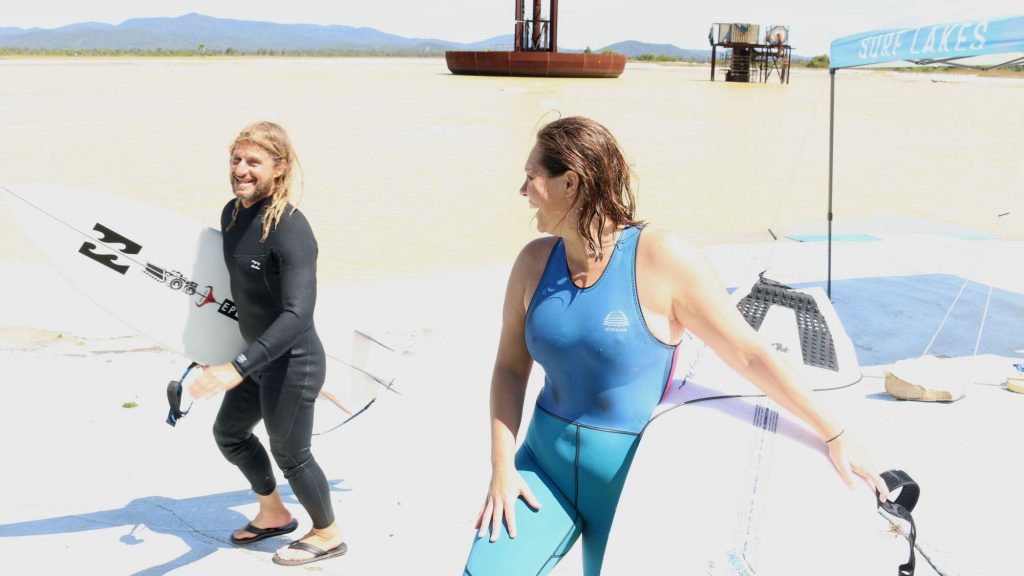
STYLE
Wetsuits come in various styles depending on the temperature of where they are used. Some wetsuits cover your entire body, some have attached hoods to cover your head, others leave the arms or legs exposed, and some cover just the torso.
Let’s look at the difference.
Fullsuit
A fullsuit has long legs and arms, nearly covering the entire body. Fullsuits are generally used for relatively cooler conditions and vary in thickness from 2-7mm (we’ll get into thickness later) depending on the air and water temperatures.
Springsuit
A springsuit leaves some, or all, of the extremities exposed; Some have short legs that cut off above the knee with long sleeves, or long legs with short sleeves that cut off above the elbow (for men). Some have both short legs and short sleeves.
Women’s springsuits will often expose a little more skin, with more of a bikini outline at the bottom and, at times, a tank-top style on top.
Springsuits are generally used for mild temperatures, typically with a thickness of 1-2mm.
Tops
A wetsuit top is essentially a shirt, with long, short, or no sleeves that you wear over your torso, sometimes with a mechanism at the waist to cinch the suit tight, keeping water out.
Tops are generally reserved for warm, tropical conditions, typically 1-2mm in thickness. They are great for early tropical mornings before the sun has come up, or windy days to keep the bite of wind chill off your skin.
Wetsuit accessories
You’ll notice that the above styles generally leave your feet, hands, and head exposed. In cold conditions leaving these body parts exposed can be painful, so there are accessories that you can use to cover them too.
Gloves cover the hands, booties cover the feet, and hoods cover the head (some fullsuits come with attached hoods). As with wetsuits, all of these accessories are available in various thicknesses to correspond with the temperatures that they will be used in.
With booties, it’s worth noting that reef booties exist that are not meant to keep your feet warm, but protected from walking or falling on sharp reefs. Reef booties are relatively thin and cut off below the ankle, versus cold water booties that rise above the ankle. (Pro tip: make sure your booties are tucked under the wetsuit to avoid the scrutiny of any salty surfers in the lineup.)
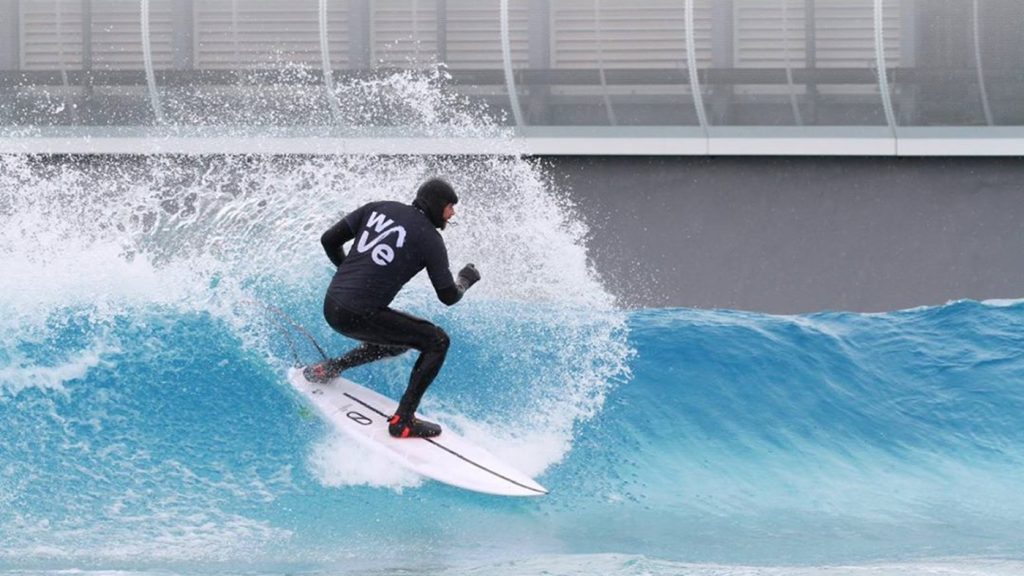
THICKNESS
Before we get into what thickness you need, let’s learn how to read a wetsuit’s thickness. You’ll notice that printed within the suit there will be numbers like 4/3, 3/2, or 2/2.
This is referring to the wetsuit thickness in millimeters (mm). The first number refers to the thickness of the suit in the torso area, and the second number refers to the thickness in the extremities – the arms and legs.
So, what thickness do you need? The answer: it depends on you and the conditions you surf in.
Some people run much colder than others, so they might want an extra millimeter all around. Others run hot. They might want a thinner suit.
There are multiple environmental factors that can make you cold: air, water, and wind. The temperature of the air/water and the strength of the wind will determine how thick of a suit you want.
A 4/3 is a standard cold water suit, generally used in water temperatures from 12C (55F) to 18C (65F). Again, personal preference, wind conditions, and air temperature can also affect that range.
A 3/2 is a standard thickness for mild temperatures, good for a water range of 15C (60F) to 21C (70F).
Suits in the 1-2mm range are best for warm water surfing, 21C (70F) and up.
In the warmer seasons, you will find many wave pools around the world in this range, making a thin springsuit or top a viable option.
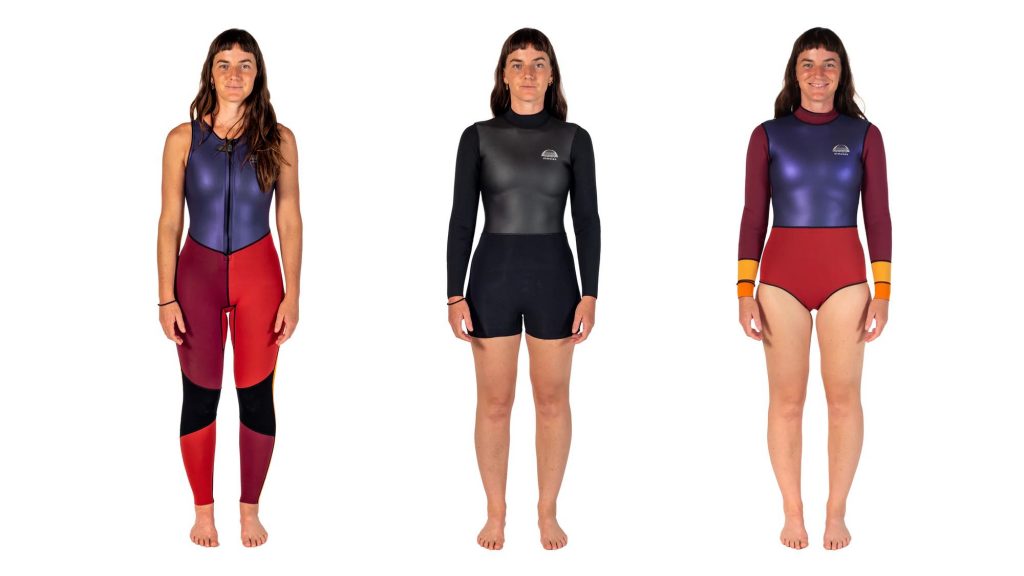
Wave pool temperatures vary greatly between different pools and seasons. There have been reports of wave pool water temperatures as high as 30C (86F) in the summer in Japan, and temperatures as low as 3C (36F) in Switzerland’s Alaia Bay. The bottom line: just like the ocean, pool temperatures fluctuate greatly by season, with temperatures more extreme in the locations with stark seasonal contrasts.
Then there are the very cold water suits, which can be 5-7mm thick, used in temperatures below 12C (55F). The more frigid wave pools can get down to 5C (41F) in the winter; You’ll definitely want some thickness for those conditions.
As a reminder, these water ranges are estimates, and only you will learn what suit your body needs as you experiment with surfing in various water and air temperatures. Each brand will also advertise the water temperature range that they estimate the suit should be used in.
Also, note that as a suit ages and becomes less water-tight, you will need relatively more thickness to maintain the same body temperature that you are accustomed to with a new suit.
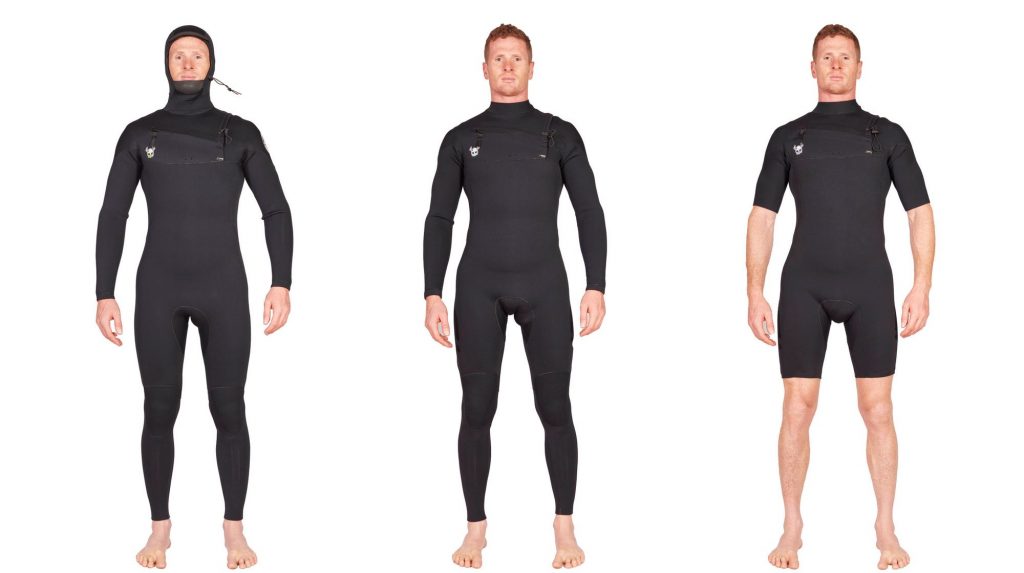
ENTRY
Zippers
You’ve chosen your suit design and thickness, but what about the different zipper styles? There are three main types of zipper styles to seal your suit: back, chest, and zipperless.
Back zip
A back zipper is exactly what it sounds like: A suit that closes via a long zipper that runs from the back of the neck to the lower back. Some surfers prefer this style, but the downside is that the long zipper makes the suit less flexible. Remember that the only part of a wetsuit that cannot stretch is the zipper, so more zipper leads to less flex.
Chest zip
A popular entry method for suits is a chest zip – a shorter zipper that runs across the chest.
These suits generally have a piece that is pulled over your head that zips to the chest. The advantage is that there is less zipper and more flex – particularly in the back where the body will bend and stretch the suit.
Zipperless
In more recent years wetsuit brands have been experimenting with a zipperless entry. These suits are constructed in such a way that a piece of the suit is pulled over the head that creates a seal that does not require a zipper.
The obvious benefit is added flex and no weak points that a zipper can cause that allow water in and out. Zipperless technology is rapidly improving, but for now this technology is still in its nascent stages.
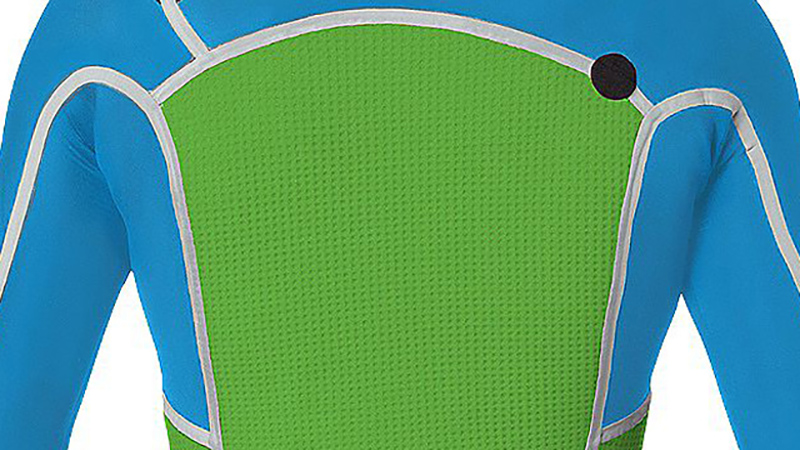
QUALITY
You’ve picked out the perfect suit, but now a new problem: The prices vary so much between each type of suit. What’s the difference?
The answer is the quality of material and construction. Better quality will run up the price, but better quality will, in theory, last longer and make for a warmer surfing experience.
Here are a few of the factors to look for in the quality of the suit:
Stitching
A wetsuit consists of several pieces of neoprene and they need to be stitched together. The way that a suit is stitched will determine how much water it keeps out and how much it costs.
A cheap suit will use more basic stitching methods in which the needle penetrates all the way through the neoprene. This hurts the suit’s ability to keep water out by creating small needle holes in the material.
A high-end suit will use a style called “blind” stitching – a more technical method that makes the seams “invisible,” where the two pieces of neoprene meet. In this method, the needle never fully penetrates the neoprene creating a more water-tight bond.
Glue and tape
A quality suit won’t just stop at stitching the seams together. If you place glue between the neoprene pieces and place quality tape over the stitching, this will create an even more water-tight bond.
Any high-end suit will have the seams taped and glued, creating more durability before the seams inevitably open from wear and tear. Low-end suits often do without this – you’ll notice this because the stitching will be exposed.
Neoprene quality
Honestly, between all the marketing done by wetsuit brands, giving their latest neoprene technology names, it can become dizzying to compare apples to apples. With coined neoprene names like O’Neill’s Technobutter and Rip Curl’s HeatSeeker, it can be tricky to know what you are getting.
Not all neoprene is made the same. They vary in weight, flex, durability, and how much water they absorb. And for the purposes of the average surfer, you don’t need to look too hard into this. Just know that higher-end suits with higher price tags will have higher quality neoprene. Try the suit on and feel the difference for yourself.
Higher-end wetsuits will also have internal linings for added comfort and warmth – a nice fuzzy material that is hydrophobic and feels more luxurious on the skin than the rub of neoprene. Most of the fluff is concentrated in the core (torso and thighs) and works by keeping a thin layer of air between suit and user. Air heats more efficiently than water, so the fuzzy lining keeps you warmer.
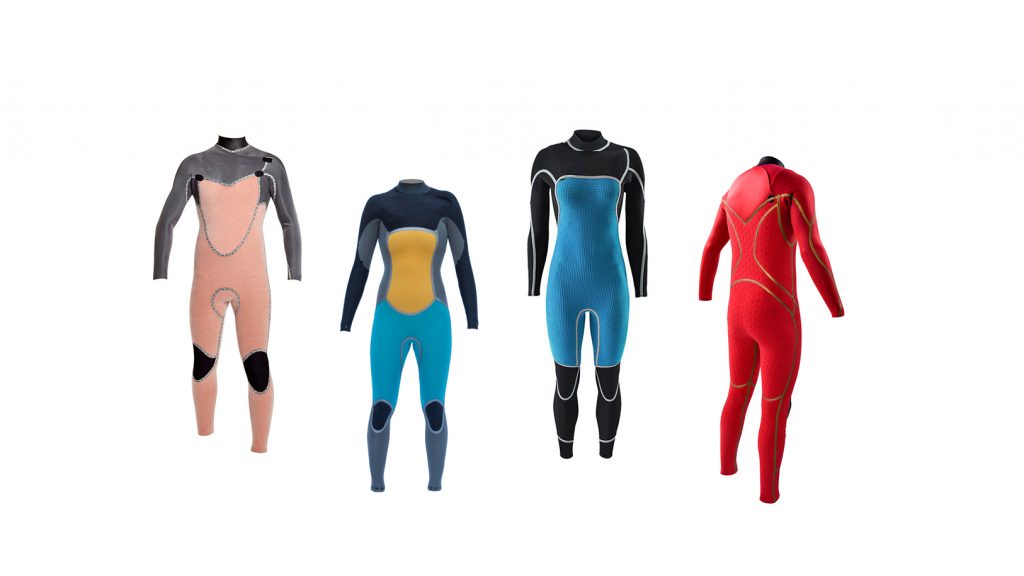
FIT
Perhaps the easiest thing to overlook when selecting a wetsuit is the fit. The best wetsuit in the world won’t do you any good if it doesn’t fit you well.
When trying on wetsuits you want it to be very snug around your body, but not so tight that it’s uncomfortable or restricts your range of movement. You don’t want the suit to be too loose either, as that will allow water to flow freely in and out.
For men, wetsuit sizes are organized on a scale of small to extra large. There are variations such as “tall” or “short”, for example, “medium tall,” which means the suit will be slightly longer than the medium size.
For women, wetsuits are sized by numbers, generally even numbers from 2 to 16.
Unfortunately, as with clothing brands, there can be size variations between wetsuit brands. Just because the medium Hurley fits you well doesn’t mean that the medium O’Neill will fit too. It’s crucial to try on the suits, so go down and support your local surf shop or wave pool pro shop on this one. The extra effort and input from experienced sales staff will save you headaches in the long run.
Some things to look for with a wetsuit fit are empty space or bunched-up neoprene. The armpits and groin areas are common spaces for the wetsuit to bunch up, which will inevitably cause uncomfortable rashes when you paddle. If you notice a lot of extra neoprene in your armpit, try to size down, or just look for a different brand that may have a cut that better suits your body type.
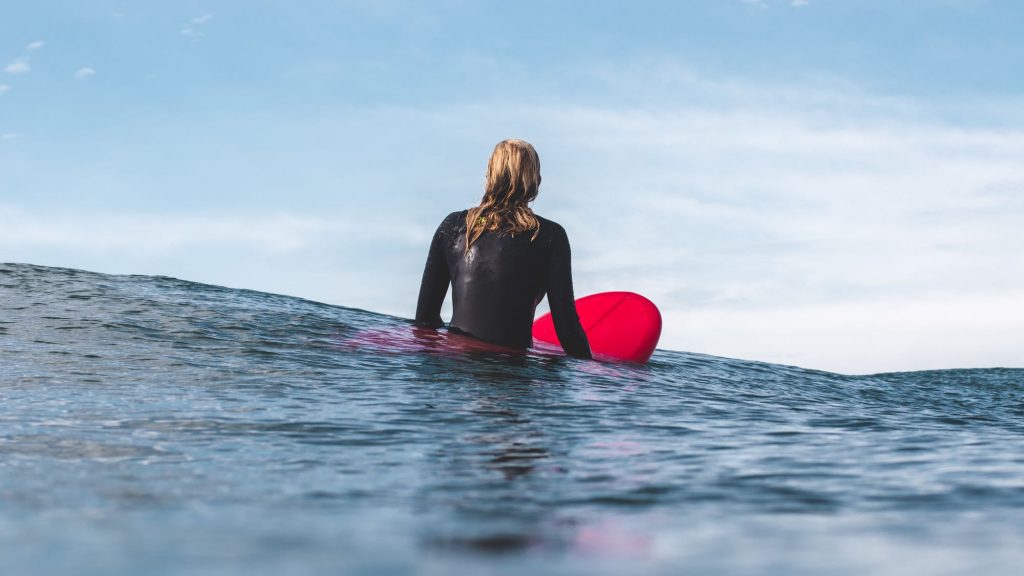
Take care of your suit!
You’ve selected a suit. You’re ready to take it out to the ocean or wave pool. Keep in mind that how you treat your suit will determine how long it maintains its quality.
Some general rules of thumb: Rinse with fresh water after every use, don’t leave it out to dry in direct sunlight, find a cool shaded space. Every now and then, wash it with some type of gentle cleaning agent. There are several available on the market. No matter how clean you think you are, your suit will start to smell like the bacteria that live within it if you don’t give it a good wash.
Find your suit and stay warm
As you advance from beginner wave settings to intermediate to the ocean and beyond, you’ll quickly learn what works for you. Factoring in how hot or cold your body runs in comparison to the conditions is priceless information. You’ll soon be able to gauge whether a 3/2 will cut it on a September day at Urbnsurf Melbourne or if you should level up to a 4/3 with boots.
You’ll quickly learn what style, thickness, seam, entry system and brand work best for you.
Related Coverage
